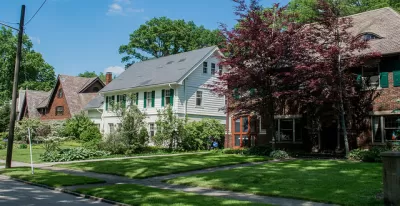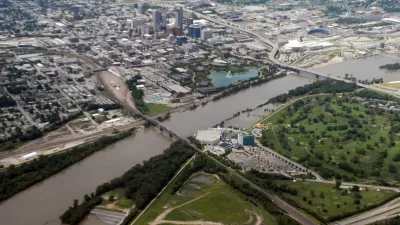A new study shows a troubling reversal of fortunes in many middle-class Black neighborhoods.

A study by Center for Community Progress senior fellow Alan Mallach found alarming rates of decline in the economic growth of Black middle-class neighborhoods in six U.S. cities. As Alan Greenblatt reports in Governing, "Mallach examined more than 300 neighborhoods – all with healthy median incomes in 2000 – and found that a large majority had slipped into poverty by 2018. Fortunes improved in only a handful of neighborhoods; gentrification was barely a factor. In nearly all the neighborhoods, homeownership was down, while vacancy and poverty rates were up."
This troubling trend, writes Greenblatt, has created what Mallach calls "a crisis of non-replacement" that "leads, almost inevitably, to a vicious cycle, sending those neighborhoods into further decline." For better or worse, writes Greenblatt, "the ZIP codes where people grow up determine their trajectory throughout their entire lives," yet Black neighborhoods continue to face discrimination in real estate and public investment. "Homes in predominantly Black neighborhoods are undervalued by $156 billion nationwide, according to the Brookings Institution."
But historically racist policies don't tell the whole story, writes Greenblatt. "Something new has occurred over the past 20 years to drive once-stable neighborhoods into poverty." According to Mallach's study, "[i]n cities where white middle neighborhoods declined, Black neighborhoods declined more. Where white neighborhoods prospered, Black neighborhoods did not share in that prosperity." Greenblatt points to deindustrialization, high unemployment rates, and predatory lending as contributing factors to the decline that occurred in the last two decades.
Two bills now in Congress, the Restoring Communities Left Behind Act and the Neighborhood Homes Investment Act, would create a new grant program and a tax credit aimed at supporting more affordable housing and stabilizing neighborhoods. "There’s no single solution that will work for every struggling neighborhood," writes Greenblatt. "Few will pursue the exact same formula for sprucing up and marketing areas that are on the cusp between growth and decline. But seemingly simple steps can pay major dividends over time, making neighborhoods healthier for residents and more appealing to newcomers."
FULL STORY: Why Black Neighborhoods Continue to Struggle

Alabama: Trump Terminates Settlements for Black Communities Harmed By Raw Sewage
Trump deemed the landmark civil rights agreement “illegal DEI and environmental justice policy.”

Study: Maui’s Plan to Convert Vacation Rentals to Long-Term Housing Could Cause Nearly $1 Billion Economic Loss
The plan would reduce visitor accommodation by 25% resulting in 1,900 jobs lost.

Why Should We Subsidize Public Transportation?
Many public transit agencies face financial stress due to rising costs, declining fare revenue, and declining subsidies. Transit advocates must provide a strong business case for increasing public transit funding.

Paris Bike Boom Leads to Steep Drop in Air Pollution
The French city’s air quality has improved dramatically in the past 20 years, coinciding with a growth in cycling.

Why Housing Costs More to Build in California Than in Texas
Hard costs like labor and materials combined with ‘soft’ costs such as permitting make building in the San Francisco Bay Area almost three times as costly as in Texas cities.

San Diego County Sees a Rise in Urban Coyotes
San Diego County experiences a rise in urban coyotes, as sightings become prevalent throughout its urban neighbourhoods and surrounding areas.
Urban Design for Planners 1: Software Tools
This six-course series explores essential urban design concepts using open source software and equips planners with the tools they need to participate fully in the urban design process.
Planning for Universal Design
Learn the tools for implementing Universal Design in planning regulations.
Smith Gee Studio
Alamo Area Metropolitan Planning Organization
City of Santa Clarita
Institute for Housing and Urban Development Studies (IHS)
City of Grandview
Harvard GSD Executive Education
Toledo-Lucas County Plan Commissions
Salt Lake City
NYU Wagner Graduate School of Public Service





























